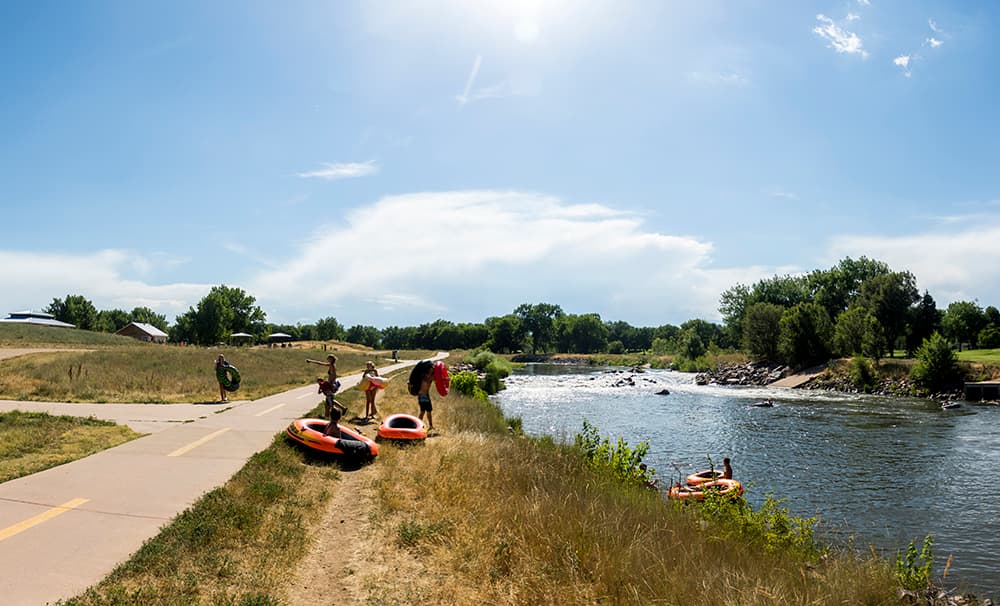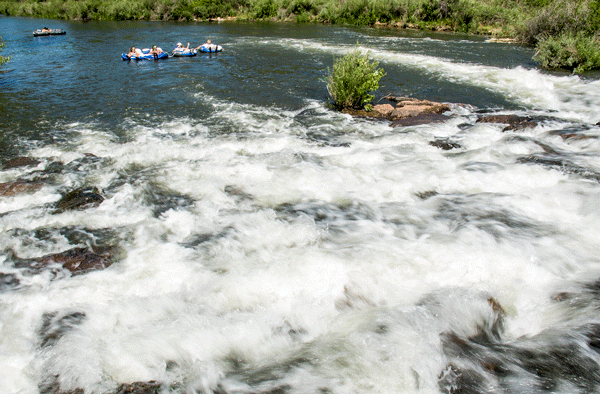
Tubing the South Platte River is, perhaps, controversial. Some say the river is dirty and shouldn't be touched (see Step 2 below for more on this from an environmental scientist). This reporter, on the other hand, finds a distinct pleasure in the peaceful float from South Platte Park that's punctuated with a few thrilling rapids along the way. And I'm not the only one. While South Platte Park has always been a city-close river tubing destination, river managers say its popularity has skyrocketed in the last few years.
If you find yourself gravitating toward a leisurely day on the water, consider these guidelines to enjoying Denver's natural features while keeping you and the local ecosystem safe.
Step 1: Gather your gear
Tube: The stretch of river encompassed by South Platte Park is mostly a chill ride, but there are some rapids so you may want to select a tube that's hardy enough for a little action. I've found that Dicks Sporting Goods has the best options, though there are a lot of Costco vessels floating out there as well. I went with a round tube equipped with netting across the bottom, cupholders and a back rest (additionally, it's Jimmy-Buffett-themed). I also recommend a tube with an air nozzle that's big enough for some kind of pump. Look for "reinforced PVC," as far as materials go.
Accessories: Sunscreen is a must, so don't forget it and end up fried. An air pump is also handy to keep from hyperventilating before you even begin your adventure. Don't forget a water bottle. A carabiner is handy to keep everything together, and some kind of water shoes are also a good idea (I love my Chacos). Bonus points are awarded for a dry bag to keep towels, phones, etc, safe for the journey.
Step 2: Know your route and check conditions
The following route takes 2-3 hours and includes at least four rapids. The South Platte flows north-to-south here, so you'll start closer to Chatfield Reservoir and end up at Reynolds Landing near the Breckenridge Brewery in Littleton. You can go further if you want, but I don't entirely recommend it. Reynolds Landing has a good parking setup and the water is still nice that far upstream. (See a map here!)
Something to note early on is that there is a risk of getting sick on the river.
According to Jon Novick, an environmental scientist at Denver Department of Environmental Health, there's always a chance of brushing up against E. coli in the river. "Honestly," he said, "I can't tell you with a straight face that you won't get sick."
That said, Novick also said that water quality gets better the closer you get to Chatfield, and then degrades as you near Denver. This is why my route starts almost as far as you can go before you hit the Chatfield dam and why getting out at Reynolds Landing is a good idea.
One more thing to note about E. coli: Novick says levels are at their highest right after a storm when storm drains have been freshly flushed. Do not plan your trip too soon after it rains.
You should also be aware of how much water is in the river. Check water levels at the Colorado Division of Water Resources website (here's the link for the South Platte Park monitor). The chart on that page displays up-to-date info on water discharge rate from Chatfield Reservoir into the South Platte River.
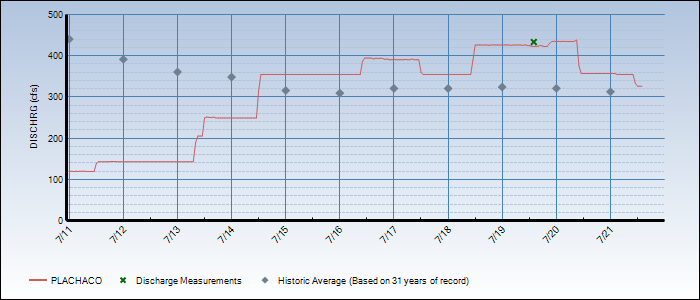
Skot Latona, South Platte Park's supervisor, said the Goldilocks zone for safe tubing is as low as 100 cubic feet per second (cfs) and as high as 500. Anything below means the river is probably too low, anything above likely means a violent ride. If you're taking kids, you might reconsider if things look like they're approaching 400 cfs.
Water discharge, Latona said, "Can change every 4 hours and it can change dramatically," so be wary of your surroundings.
Step 3: Get your car situation figured out
This is tricky and important. According to Latona, the 800 acre, 2.5 mile riparian stretch of South Platte Park was designed to be a wildlife area. In an attempt to preserve the ecosystem, managers have only allowed for very limited parking.
As such, you should attempt to meet your tubing comrades downstream and carpool to the headwaters in one vehicle. There are two lots, one where the pin on the map is located and another that you'll pass on the way. You may see people who have parked on the side of the road, blatantly beneath "no parking" signs, but just know they're probably getting a ticket.
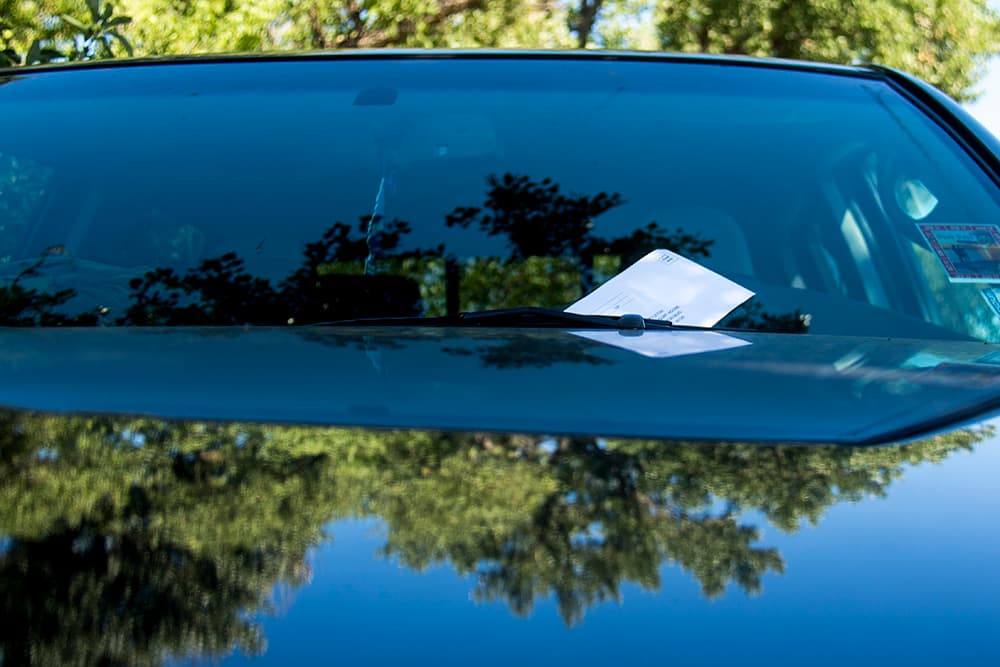
I spoke to a ranger who says he's been writing a ton of tickets. I also spoke to someone eager to park who thought the $25 fee was worth it. While there are certainly plenty of cars parked along the side of the road, keep in mind that parking on the grass is damaging to the ecosystem that managers are trying to keep in tact. Instead, get there before noon for a better shot at a spot. If the lots are full, just be patient. There's actually decent turnover as people filter in and out of the park.
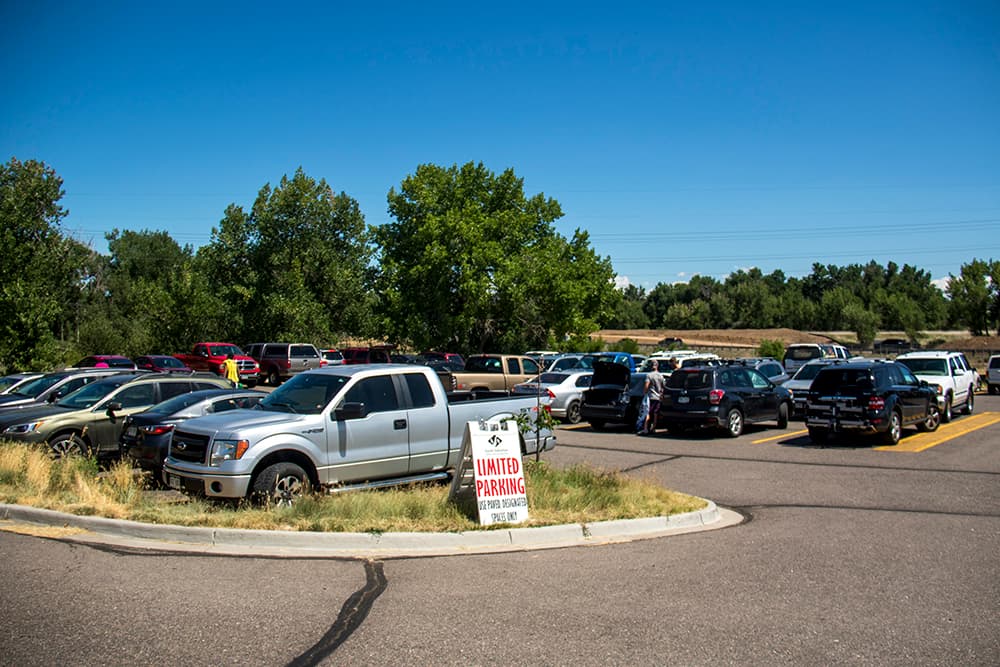
Step 4: Jump in and enjoy, responsibly
Especially if you need to get gear before you leave, tubing can be something of a top-heavy adventure. But believe me when I say it's all worth it once you hit the water.
The route begins with an optional rapid that will give you an idea of some more to come. It looks scary, but it's really a lot of fun.
As you approach these rapids look out for two massive "guide boulders" that will direct you to the right way down. Each feature has been configured to allow for floaters like yourself safe passage.

I suggest taking on each rapid on your back with your butt up and your feet straight out in front of you. Try to increase your surface area so you are balanced and floating on top of your tube.

Since the park is meant as a wildlife area, you're likely to encounter the likes of baby ducks and maybe even some kind of river mammal. Look, admire, but don't touch. Their presence is also a solid reminder to be conscious of litter; don't forget it's their turf you're enjoying.
You'll know you're at Reynolds Landing when you hit two rapids in a row. There will be a golf course on your left and you ought to see some pavilions and signs of Breckenridge Brewery on your right.
Be safe and enjoy the float.
